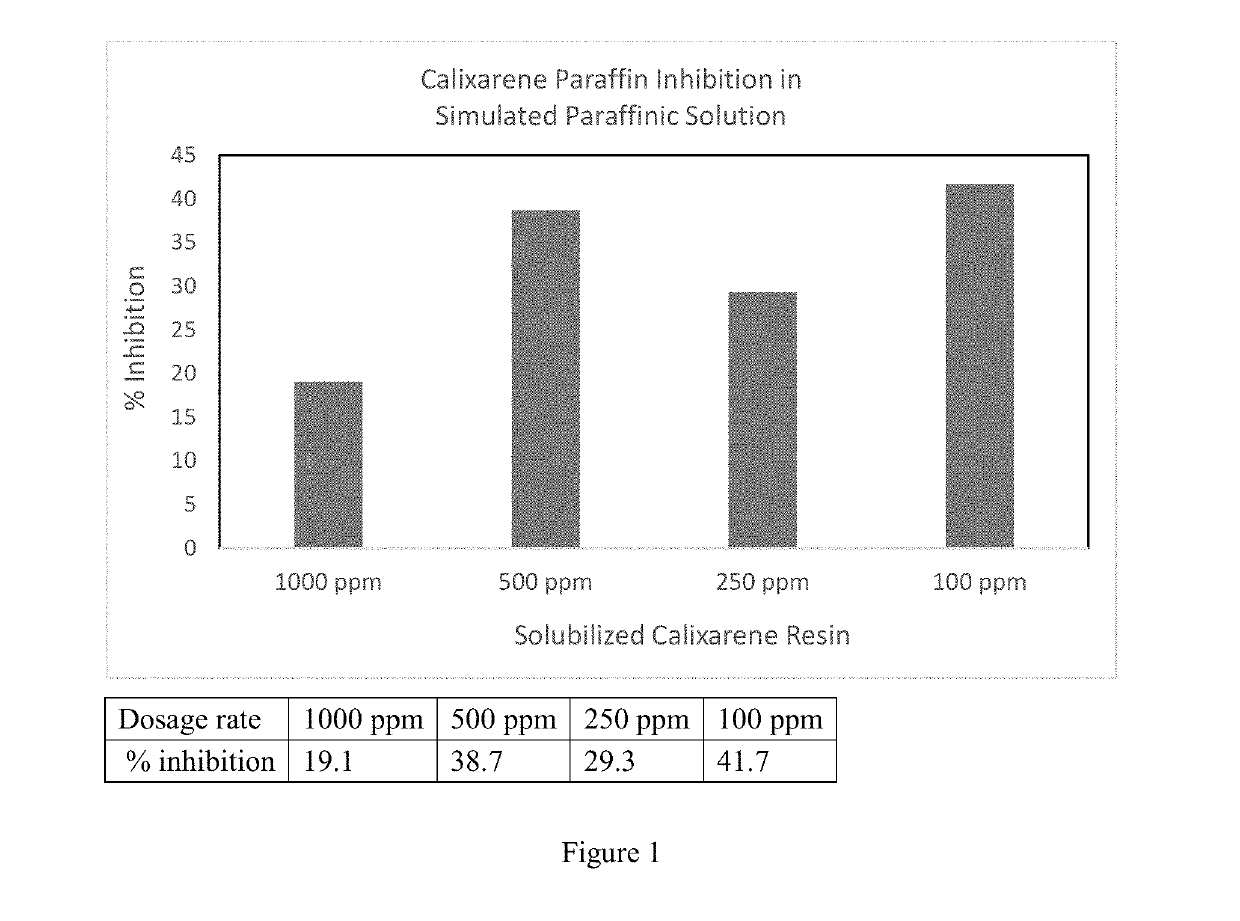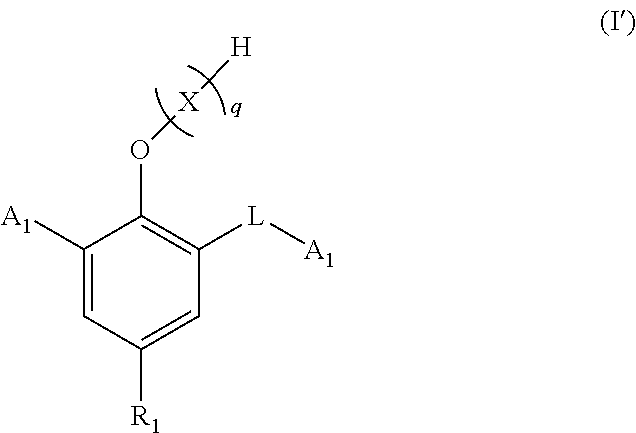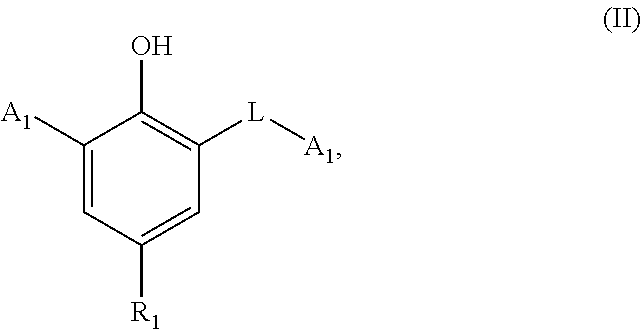Paraffin inhibition by solubilized calixarenes
a calixarene compound and solubility technology, applied in the direction of lubricant compositions, mechanical equipment, fuels, etc., can solve the problems of inability to process further, insoluble insoluble insoluble insoluble insoluble insoluble insoluble insoluble insoluble insoluble insoluble insoluble insoluble insoluble insoluble insoluble insoluble insoluble insoluble insoluble insoluble insoluble insoluble insoluble insoluble insoluble insoluble insoluble insoluble insoluble insoluble insoluble insoluble insoluble insoluble insoluble insoluble insoluble insoluble insoluble in
- Summary
- Abstract
- Description
- Claims
- Application Information
AI Technical Summary
Benefits of technology
Problems solved by technology
Method used
Image
Examples
example 1
of a Mixture of Calixarene / Linear Alkylphenolic Resins Based on Para-Tert-Butylphenol and Para-Nonylphenol
[0126]A reaction vessel was charged with para-butylphenol and para-nonylphenol, Solvesso™ 150ND solvent (an aromatic solvent commercially available from ExxonMobil Chemicals), and sodium hydroxide. Formalin was added to the reaction mixture over a period of 0.5 to 1.5 hours. The reaction mixture was then heated to reflux and the reaction was completed within 3-4 hours, Solvesso™ 150 solvent was added to the reaction mixture to adjust the percentage of the resulting resins to 53-55 wt %. During the reaction, the product started to precipitate out of the resin solution. The final yield was 97%, and the appearance of the product was a suspension of partially insoluble material.
[0127]Samples of the final product were left under room temperature, and placed in the freezer at −25° C. for 24 hours. The insoluble solid precipitate was isolated and weighted.
example 2
tion of the Calixarene with n-Butyl Glycidyl Ether
[0128]80.8 g of the resin prepared in Example 1, as described above, was added (solid content of 55.13%) in A150ND solvent (0.24 molar equivalents of phenolic hydroxyl units; commercially available from Shell) and 30.4 g of n-butyl glycidyl ether (0.96 molar equivalents of glycidyl ether in relation to the phenolic hydroxyl units) were added to a 250 ml flask equipped with mixing, heat and a reflux condenser. Heat and mixing were started and at 98° C., 0.52 g of 2-methylimidazole was added to the slurry. At 144° C. darkening of the reaction mixture was observed as the reaction product became soluble in the A-150ND solvent. Upon reaching 150° C. the reaction mixture was clear. The clear solution was then held at 150° C. for one hour then cooled and 111.64 g of the reaction product was discharged to a glass jar.
[0129]The final product had a viscosity of 426 cP at 25° C. and a MW of 2244, which is higher than the starting resin prepared...
example 3
Deposition Inhibition Using the Calixarene Stabilized with n-Butyl Glycidyl Ether (Solubilized Calixarene Resin)
[0130]A simulated waxy crude oil was prepared by adding 5.7 wt % of paraffin waxes (Sasol wax, Sandton, South Africa) into a mixture of kerosene, heptane and xylenes. This simulated waxy crude oil formulation is shown in Table 1 below.
TABLE 1Simulated Crude Oil FormulationKerosene66.0%Heptane18.9%Xylene9.4%Sasolwax 46102.8%Sasolwax 41101.9%Sasolwax C80M0.9%Sasolwax H10.1%
[0131]The simulated waxy crude was conditioned in an oven at a temperature of 100° C. for about 1-2 hours, and then partitioned into 6 cold finger test jars, each being equipped with a magnetic stir rod. The jars were then treated with a solubilized calixarene resin, prepared according to Example 2, at a dosage rate of 1000 ppm, 500 ppm, 250 ppm, and 100 ppm (i.e., μL / L, which is commonly used as an approximation for ppm in the oilfield industry) of a 55 wt % active resin product solution in Solvesso 150 s...
PUM
| Property | Measurement | Unit |
|---|---|---|
| Fraction | aaaaa | aaaaa |
| Fraction | aaaaa | aaaaa |
| Fraction | aaaaa | aaaaa |
Abstract
Description
Claims
Application Information
 Login to View More
Login to View More - R&D
- Intellectual Property
- Life Sciences
- Materials
- Tech Scout
- Unparalleled Data Quality
- Higher Quality Content
- 60% Fewer Hallucinations
Browse by: Latest US Patents, China's latest patents, Technical Efficacy Thesaurus, Application Domain, Technology Topic, Popular Technical Reports.
© 2025 PatSnap. All rights reserved.Legal|Privacy policy|Modern Slavery Act Transparency Statement|Sitemap|About US| Contact US: help@patsnap.com



